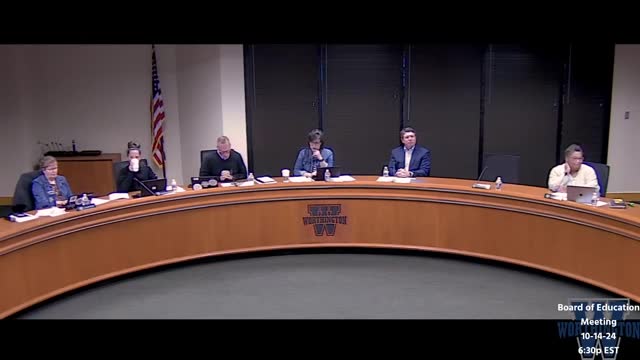Worthington Schools gather feedback on new cell phone policy before adoption
May 23, 2025 | Worthington City, School Districts, Ohio
This article was created by AI summarizing key points discussed. AI makes mistakes, so for full details and context, please refer to the video of the full meeting. Please report any errors so we can fix them. Report an error »

In a recent Worthington Schools Board of Education meeting, the discussion centered around the pressing issue of cell phone use in schools, a topic that has gained significant attention following Ohio Governor Mike DeWine's new legislation mandating school districts to adopt policies by July 2025. The Worthington Schools administration emphasized the importance of gathering feedback from students, parents, and staff before finalizing any policy changes.
The meeting highlighted the findings from extensive surveys conducted among high school students, parents, and staff, revealing a complex landscape of opinions regarding cell phone usage. Approximately 20,000 students participated, with 94% reporting they bring their phones to school daily, primarily for communication with family. Students expressed a desire for flexibility, advocating for phone use during downtime, such as academic prep or lunch, while also acknowledging the need for restrictions during lessons to minimize distractions.
Parents echoed similar sentiments, with 82% citing distraction from learning as a primary concern. They emphasized the importance of emergency access to phones but also called for limits to mitigate negative impacts on mental health, with 69% expressing concerns about phones affecting students' well-being at school. Staff members largely agreed, with 89% identifying distraction as a significant issue and advocating for a consistent policy across classrooms.
The administration noted that while current policies at middle schools effectively ban phone use throughout the school day, high school policies allow for phone access during non-class times. The board is considering feedback to refine these policies, focusing on responsible use and the need for face-to-face interactions among students.
As the district navigates these discussions, the overarching goal remains clear: to foster a healthy learning environment that balances the benefits of technology with the need for social development and mental well-being. The board plans to continue engaging with the community as they work towards a policy that reflects the diverse perspectives of students, families, and educators.
The meeting highlighted the findings from extensive surveys conducted among high school students, parents, and staff, revealing a complex landscape of opinions regarding cell phone usage. Approximately 20,000 students participated, with 94% reporting they bring their phones to school daily, primarily for communication with family. Students expressed a desire for flexibility, advocating for phone use during downtime, such as academic prep or lunch, while also acknowledging the need for restrictions during lessons to minimize distractions.
Parents echoed similar sentiments, with 82% citing distraction from learning as a primary concern. They emphasized the importance of emergency access to phones but also called for limits to mitigate negative impacts on mental health, with 69% expressing concerns about phones affecting students' well-being at school. Staff members largely agreed, with 89% identifying distraction as a significant issue and advocating for a consistent policy across classrooms.
The administration noted that while current policies at middle schools effectively ban phone use throughout the school day, high school policies allow for phone access during non-class times. The board is considering feedback to refine these policies, focusing on responsible use and the need for face-to-face interactions among students.
As the district navigates these discussions, the overarching goal remains clear: to foster a healthy learning environment that balances the benefits of technology with the need for social development and mental well-being. The board plans to continue engaging with the community as they work towards a policy that reflects the diverse perspectives of students, families, and educators.
View full meeting
This article is based on a recent meeting—watch the full video and explore the complete transcript for deeper insights into the discussion.
View full meeting
